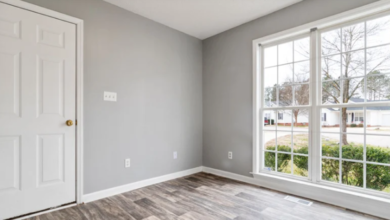
Understanding the Different Types of Mold Found in Homes
Mold is a common yet often overlooked issue in residential environments. While some types are relatively harmless, others pose significant health and structural risks. Understanding the different types of mold that can develop indoors is essential for early detection, prevention, and safe removal. Whether visible or hidden, mold can thrive in damp, poorly ventilated areas, making professional inspection and remediation a priority.
Homeowners seeking services of mold inspection in Atlanta should be aware of the most common indoor mold species and the warning signs that indicate their presence.
Common Household Mold Types
Several types of mold commonly appear in homes, each with unique characteristics and implications. Cladosporium is frequently found on wood, fabrics, and HVAC systems. It can trigger allergic reactions like watery eyes and coughing, particularly in sensitive individuals.
Aspergillus is another widespread species, often present in air conditioning systems and wall insulation. While not always dangerous, some strains can produce mycotoxins, increasing health concerns for those with respiratory conditions.
Stachybotrys, also known as black mold, is the most feared due to its toxic potential. It thrives in areas with chronic moisture problems, such as behind walls with hidden leaks. Its presence requires immediate professional removal, as prolonged exposure can contribute to neurological symptoms and immune suppression.
Why Mold Classification Matters
Identifying the type of mold in your home helps professionals determine the appropriate remediation strategy. Some mold strains grow slowly and may not spread far, while others can proliferate rapidly in just 48 hours. Understanding this distinction is key when evaluating health risks and structural impact.
Before purchasing a home, scheduling an inspection is essential to ensure a healthy living environment. Among the top reasons to have a mold inspection before buying a home is the potential to uncover hidden growths that may not be visible during a standard walk-through. These findings can affect both pricing negotiations and long-term habitability.
Signs That Mold May Be Present
Even if mold is not immediately visible, certain signs suggest it may be present. A persistent musty odor, worsening allergies, or unexplained respiratory symptoms could point to mold hidden behind walls, under flooring, or inside ductwork.
Visual indicators such as discoloration on ceilings or baseboards often appear once the infestation has become more advanced. At that point, homeowners need to take swift action, as untreated mold can weaken drywall, wood, and insulation.
Homeowners can stay ahead of serious issues by knowing how to spot signs of hidden mold and detect it early. Detecting mold in its early stages allows for targeted interventions and minimizes costly damage down the line.
When to Call a Professional
Mold is not something that should be handled casually or ignored. Attempting to clean up infestations without proper containment or respiratory protection can worsen the problem. Professional mold inspection and remediation specialists use advanced tools to assess contamination and ensure full removal.
Experts can also help identify the moisture source feeding the growth, whether it’s a roof leak, condensation, or foundation issue. Addressing the root cause is essential for long-term prevention.
Conclusion
Recognizing the different types of mold found in homes is the first step toward protecting your property and your health. By understanding the risks associated with specific mold strains and responding quickly to early signs, homeowners can prevent extensive damage. Professional inspections offer peace of mind and effective strategies for maintaining a mold-free environment.




